Award of Excellence
Tactical Operations in the Informal City
Andrew Christopher tenBrink, Student ASLA, Harvard University
Graduate School of Design
Faculty Advisor: Christian Werthmann
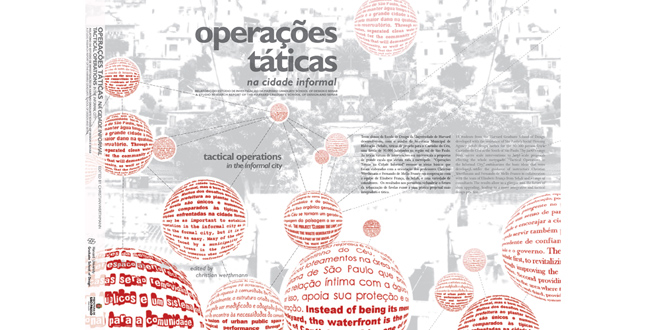 Close Me!
Close Me!The cover graphic reflecting the connection between tactics; inside the front flap a short description of the studio can be found.
Download Hi-Res ImagePhoto: Christian Werthmann
Photo 1 of 16
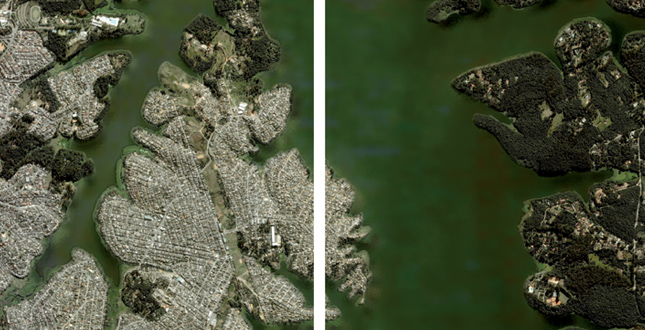 Close Me!
Close Me!The first pages were selected to be images of the site, giving the reader a sense of place before any judgments are made.
Download Hi-Res ImagePhoto: Christian Werthmann
Photo 2 of 16
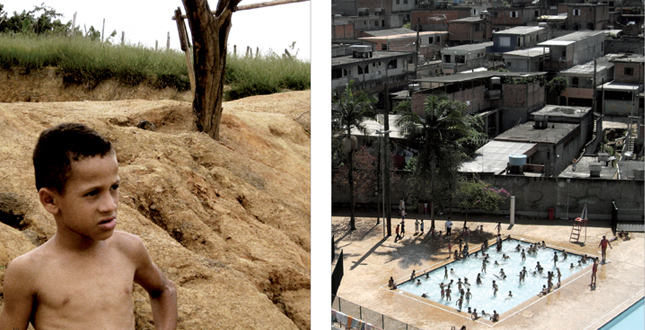 Close Me!
Close Me!These images were taken by students in the studio and attempt to reflect the nature of daily life in the Favela as well as the phenomenon of the Favela itself.
Download Hi-Res ImagePhoto: Christian Werthmann
Photo 3 of 16
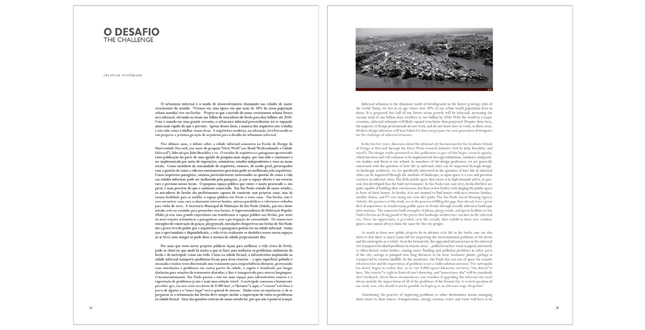 Close Me!
Close Me!The beginning chapters speak to the challenges of work within the informal city as well as the opportunities presented.
Download Hi-Res ImagePhoto: Christian Werthmann
Photo 4 of 16
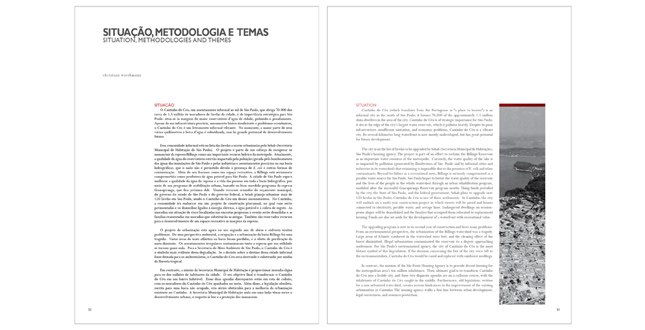 Close Me!
Close Me!A clear methodology of tactical insertions is established early.
Download Hi-Res ImagePhoto: Christian Werthmann
Photo 5 of 16
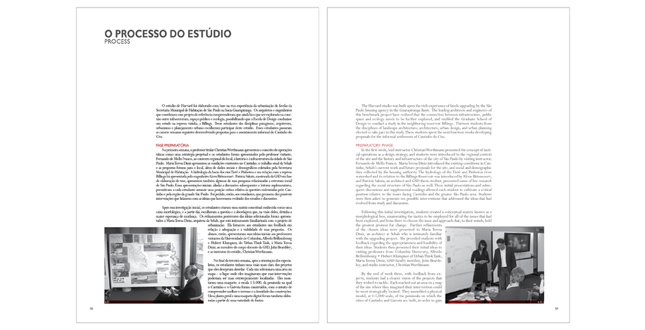 Close Me!
Close Me!The process of the studio is perhaps as important as the outcome, this ties into the methodology, including the site visit and community meetings that were held in the Favela.
Download Hi-Res ImagePhoto: Christian Werthmann
Photo 6 of 16
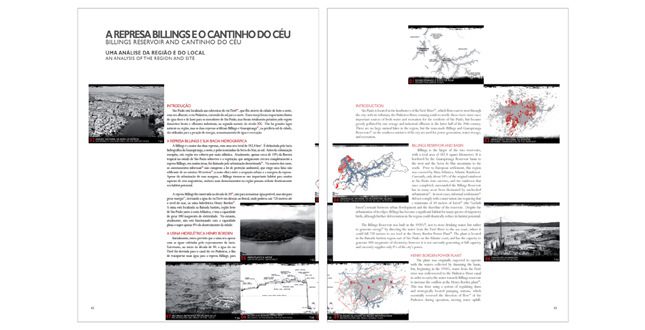 Close Me!
Close Me!The story of the settlement’s development is an interesting one; in the analysis section the regional development is explained through a series of 32 images and maps.
Download Hi-Res ImagePhoto: Christian Werthmann
Photo 7 of 16
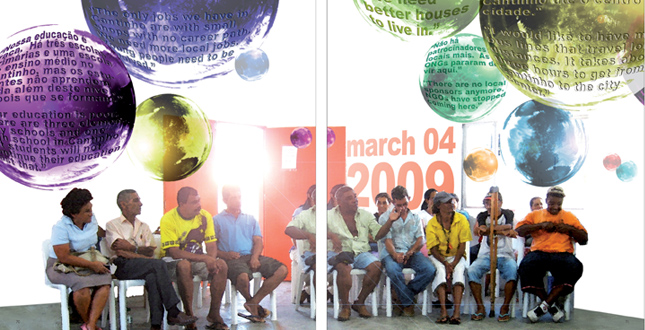 Close Me!
Close Me!At the time of the site visit, it was a critical moment to hear feedback from the community in terms of their likes and dislikes of the current state of their city.
Download Hi-Res ImagePhoto: Christian Werthmann
Photo 8 of 16
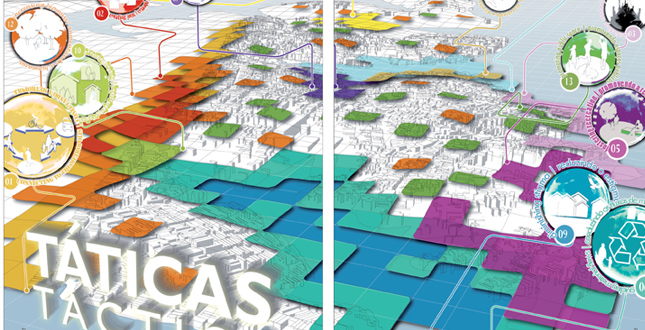 Close Me!
Close Me!The overlap of projects mark interesting points of intersections; a locator map of the projects was necessary in tell the story of their territories.
Download Hi-Res ImagePhoto: Christian Werthmann
Photo 9 of 16
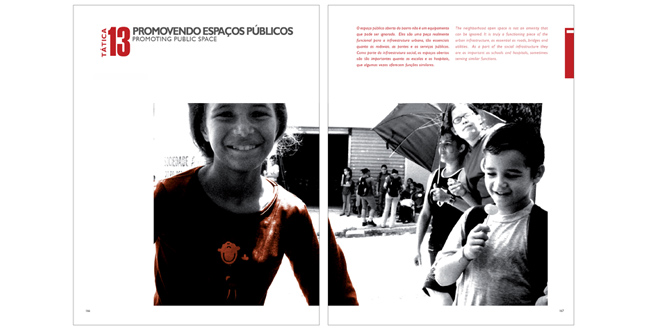 Close Me!
Close Me!The individual tactics each begin with an image of the site, speaking to the issues of the site; a brief text describes the primary agendas atop the image.
Download Hi-Res ImagePhoto: Christian Werthmann
Photo 10 of 16
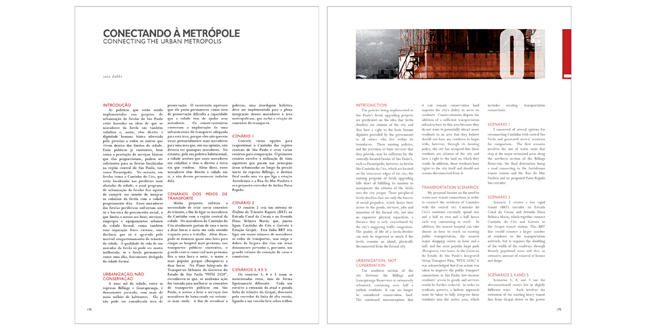 Close Me!
Close Me!Each student was invited to write a text narrating their project, describing in detail the nuances and the theoretical underpinnings of their work.
Download Hi-Res ImagePhoto: Christian Werthmann
Photo 11 of 16
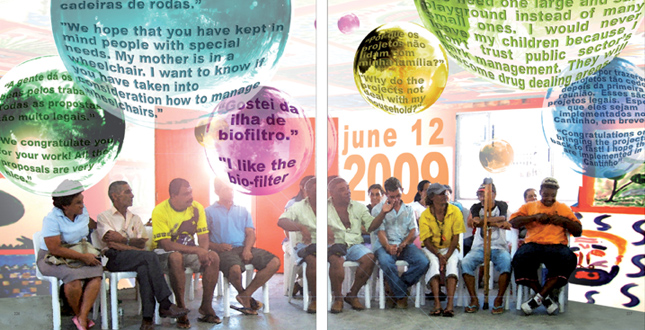 Close Me!
Close Me!The following summer after the spring studio, the projects were presented back to the community for feedback; this was incorporated into the book, providing a critical response to the work.
Download Hi-Res ImagePhoto: Christian Werthmann
Photo 12 of 16
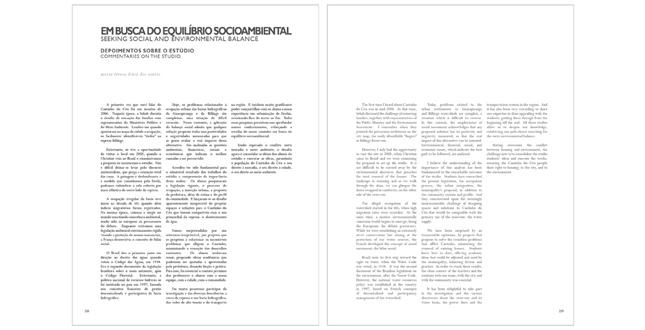 Close Me!
Close Me!Building upon the desire for critical feedback, each jury member from the studio’s final presentations was invited to provide a written critique of the work for inclusion in the book
Download Hi-Res ImagePhoto: Christian Werthmann
Photo 13 of 16
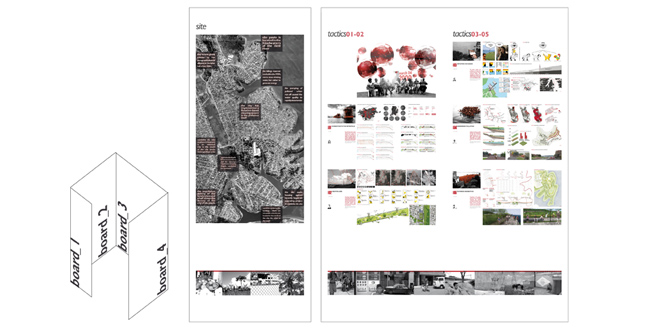 Close Me!
Close Me!The compiled project on the informal city was accepted into the parallel cases exhibition in the 4th International Architecture Biennale in Rotterdam in the fall of 2009.
Download Hi-Res ImagePhoto: Christian Werthmann
Photo 14 of 16
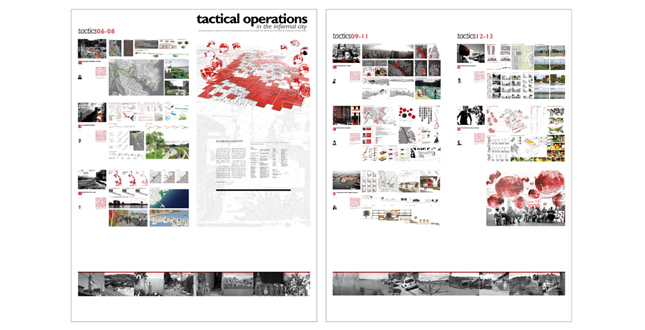 Close Me!
Close Me!The projects were assembled into a cube shaped display so the viewer might be engulfed in the work.
Download Hi-Res ImagePhoto: Christian Werthmann
Photo 15 of 16
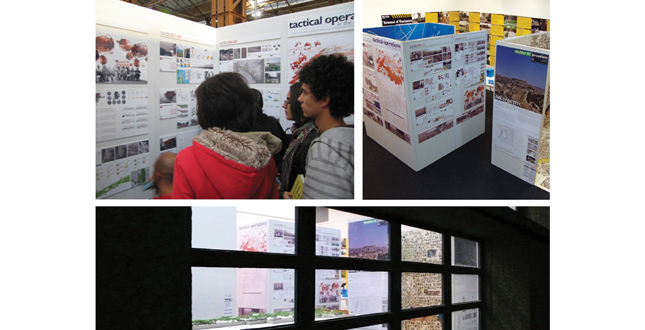 Close Me!
Close Me!In addition to being chosen for the Rotterdam Biennale, a smaller selection was selected to be shown at the Ecole Des Beaux Arts in Paris in January of 2010.
Download Hi-Res ImagePhoto: Christian Werthmann
Photo 16 of 16
Project Statement
13 students from the Harvard Graduate School of Design developed, with the assistance of São Paulo’s Social Housing Agency Sehab, design tactics for the 30,000 person favela, Cantinho do Céu, in the South of São Paulo. “Tactical Operations in the Informal City” summarizes the basic ideas that were developed under the guidance of instructors Christian Werthmann, Fernando de Mello Franco and a range of consultants. The results allow us a glimpse into the future of slum upgrading, leading to a more integrative and tactical design practice.
Project Narrative
Informal urbanism is the dominant mode of development in the fastest growing cities of the world. Today, we live in an age where over 30% of our urban world population lives in slums. It is projected that half of our future urban growth will be informal, increasing the current total of one billion slum dwellers to two billion by 2030. With the world in a major recession, informal urbanism will likely expand even faster than projected. Despite these facts, the majority of design professionals do not work, and do not know how to work, in these areas. Modern design education will have failed if it does not prepare the next generation of designers for the challenge of informal urbanism. This publication seeks to document the methodology of tactical design work within this type of urbanism, and raise questions of its efficacy. We do not assume this is the only mode of landscape intervention in the informal; we do support an ideological shift away from the traditional and modernist master plan to an ideology respecting and integrating with the existing forces at play. Through the students’ work, the commentary of the studio instructors and the critique of the jurors we hope to open up a discourse that investigates a type of project that supports the existing urban fabric while surgically intervening. But this conversation did not begin here; this work is a piece of a larger study that began at Harvard several years ago.
In the last few years, discourse about the informal city has increased at the Graduate School of Design at Harvard through the Dirty Work research initiative (led by John Beardsley and Christian Werthmann). The design studio presented in this publication is part of this larger research agenda, which has been and will continue to be implemented through exhibitions, seminars, independent studies, and thesis at our school. As members of the design profession, we are generally concerned with the question of how life in informal cities can be improved through design. As landscape architects, we are specifically interested in the question of how life in informal cities can be improved through the medium of landscape, as open space is a rare and precious resource in informal cities. The little public space that exists is in high demand and is, in general, less developed than the built environment. In São Paulo (our case city), favela dwellers are quite capable of building their own houses, but there is less facility with shaping the public space in front of these houses. In favelas, it is not unusual to find homes with nice interior finishes, satellite dishes, and TV sets facing out onto dirt paths. The São Paulo Social Housing Agency (Sehab), the partners of this study, are in the process of filling this gap; they already have a great deal of experience in transforming public space in favelas through socially informed landscape interventions. The numerous built examples of plazas, playgrounds, and sports facilities in São Paulo’s favelas are living proof of the power that landscape architecture can have in the informal city. Once the opportunity is provided, civic life actually does unfold in these new outdoor spaces; one cannot always claim the same for the city proper.
The test site at hand was chosen because it is one of the most striking examples of the complex environmental and infrastructural conditions in São Paulo. The favela of Cantinho do Céu, in the far south of the metropolis, was illegally staked out by developers in a strict no-build zone, who clear-cut a large area of intact rainforest directly adjacent to the largest water reservoir in São Paulo. In this case, the city’s interests in maintaining clean drinking water, are diametrically opposed to the interests of the residents of Cantinho do Céu, who need a place to live, and would like to stay in the homes that they have built. Can these two conflicting uses be reconciled? Can Cantinho do Céu be developed as a healthy city next to a biologically intact lake?
The answers that the 13 students who participated in this study have given are optimistic. They share a poetic pragmatism that was shaped by a 14 week process of intense negotiation between first ideas and a constant inflow of new information through research, site visits, discussions and one-on-one sessions with the instructor team, consultants, and representatives of the housing agency. From the outset, the students were asked not to develop a master plan for the whole city, but rather to propose one or two interventions that could initiate a chain reaction of improvement. This challenge led to the development of 13 tactical operations ranging from small-scale interventions to propositions on the metropolitan scale.
Some of the strongest tactics are based on the connection between ecology and economy, generating income by cleaning-up the reservoir or the city’s sewage on site (tactics #4 and #6); these tactics produce a new landscape matrix that is as indeterminate and as auto-generative as the forces that shape the informal city. Others pursued objectives like planting more trees (tactic #12) or developing stormwater treatment wetlands (tactic #7) in great depth; these seemingly simple objectives are actually quite complicated and difficult to achieve (as previous attempts have shown) and require smart strategic approaches to guarantee long-term viability. If done correctly, they could have a considerable positive impact on the physical environment (climate and sanitation) and the psychological outlook of the city. Many student tactics respond to the needs of the population as expressed in our community meetings. Citizen requested more recreational opportunities, more local jobs, and better transportation infrastructure; these themes are the main focus in tactics #1, #2 and #5, which are also more regional in scope. Other tactics delve deep into the urban body of Cantinho do Céu and propose the public use of microscopic left-over parcels (tactic #13), develop new urban centers (tactic #11), or provide new typologies for the notoriously difficult topic of replacement housing (tactic #10). Some proposals are keen on questioning current environmental law (tactic #8), preparing the infrastructure for future tourism and exchange with the formal city (tactic #3), or proving, through the isolation of a reservoir bay, that Cantinho do Céu’s water can be cleaner than the larger reservoir’s (tactic #9), disbarring the notion that poor people cause pollution when it is actually the city proper that pollutes the reservoir most.
These results have been compiled into “Tactical Operations in the Informal City”, a book that not only documents the projects themselves, but also the processes and methodologies that began to formulate them. This was meant to open up a larger conversation on the role the field of landscape architecture in the growing informal city to the academic and practicing communities. The audience for this has largely been targeted to the academic and professional bodies empowered to take on this task. This has been supported by its distribution method. The São Paulo’s Social Housing Agency and the studio instructors have taken the task of distributing over 2,000 copies printed throughout the municipal government and other targeted bodies. From these networks the book has covered much ground from its first public display at the Graduate School of Design at Harvard, to the São Paulo’s Social Housing Agency, to the Parallel cases exhibition in the 4th International Architecture Biennale in Rotterdam, to the Ecole des Beaux Arts in Paris, to the Museu Casa da Brasileira in Sao Paulo. Competition for entrance into the Architecture Biennale in Rotterdam was targeted as the first truly public display of the work and the first major distribution of the book. Since that point work from the book has been sited in numerous publications ranging from Columbia University’s SLUMLab Newspaper (2009), to LoftLife Magazine (2010), to Ecological Urbanism (2010). We hope through the distribution of this book we might be able to instigate an academic and processional interest in this critically under-published sector of work.
In summary, the thoughts and work compiled in this book are a true product of an “informal” pedagogy. The combined effect of these tactics could be substantial not only for Cantinho do Céu and the metropolis, but also for the design community as a whole, instigating a wave of engagement with the informal city. The Harvard study was an attempt to explore the terrain of leapfrogging informal cities to an alternate stage of development. Given the academic setting, the students, who have been to Brazil only once, have tested the viability of their ideas to the fullest possible extent; now it is up to the municipality of São Paulo and the design community to test these ideas in the field.
Additional Project Credits
The studio instructors of the Harvard Graduate School of Design studio, from which this book and exhibition were published, were Christian Werthmann and Fernando de Mello Franco. Christian Werthmann served as the primary editor of Tactical Operations in the Informal City and is the Program Director of Landscape Architecture at the GSD. His vision for the studio, publication and exhibition were and are the driving forces behind not only the structure and character of this work, but also much of the discourse surrounding landscape in the informal city.
Cynthia Silvey (MLA, 2009) took on the essential role of editing much of the text of the publication, without her diligent work, the quality of the publication would not be as it is. In addition, Rina Salvi (MLA, 2009) played a critical role in watching over much of the work, through its many iterations and provided invaluable advice. Innumerable thanks are offered to both of them for their hard work and talent throughout the process.
This publication, and research studio would not have been possible without the help of the following people and organizations:
Foremost, we would like to thank our partner, Sehab, the São Paulo Housing Agency, and its secretary, Elton Santa Fé Zacarias as well as its director of social housing, Elisabete França, and members of her staff, architects Maria Teresa Diniz and Violêta Kubrusly, and the coordinator of Water Source Program, engineer Ricardo Sampaio, who enabled us to gain an in-depth understanding of the project and its context.
We would also like to thank the studio consultants — Jonathan Tate, Richard Forman, Flavio Janches, Robert Lane, Hans Dieter Temp, Alceu Bittencourt, Hubert Klumpner, John Beardsley, Alfredo Brillembourg, David Whitney, and Mark Bayley — for sharing with us their knowledge. Their engagement and strong support throughout the entire process, decisively shaped the final results.
Many thanks to the many professionals in São Paulo who supplied us with critical information and shared with us some of their valuable time during our visit to Cantinho do Céu – the Cantinho do Céu social workers Rita de Cássia Corrêa Madureira (coordinator), Eliane Del Bianco Madureira, Mábia Gisele de Lima and Rosana Aparício; Schahin Engenharia S/A contractors, civil engineer João Luiz Lopes; Carioca Nielsen Engenharia S/A contractors, civil engineer Roberto Lauar, civil engineer Ricardo Gonçalves Pereira, civil engineer Albuíno
Azeredo Júnior; civil engineer José Roberto Juliani and team; civil engineer Álvaro Velloso; architect Mônica Dolce; architect Zilda Gonçalves; architect Marcos Boldarini, Alessandra Bulgarelli Ancesqui Ferreira; Reinaldo Paul Pérez Machado, geographer and professor at the University of São Paulo; Luis Eduardo Grisotto and Savio Mourão from Cobrape; Carlos Eduardo Rocha and Oscar Pion from EMAE; landscape architect Patricia Akinaga; Cantinho do Céu community leaders Mrs. Vera Basália and Mrs. Mauricéia “Rosa” Gaudêncio da Silva; the social workers of Paraisópolis, landscape architect Suzel Maciel; and architect Pedro Smith.
We like to thank the Harvard University David Rockefeller Center for Latin American Studies and its program director, Jason Dyett, for hosting our presentation in São Paulo, and program officer Tomás Amorim for his guidance during our stay.
Our presentation to Sehab in São Paulo would have been difficult without the help of translators, Christiana Dannemann and others, who skillfully translated all of the presentations. We would like to thank Ana Luisa Andrade and Maria Cristina Nogueira Valadares Vasconcelos for their work in translating this publication. We would also like to thank the production company, Marcelo Mario, for the execution of the book.
We are very grateful to the many design professionals who acted as our studio critics -- Shauna Gillies-Smith,
John Beardsley, Alfredo Brillembourg and Hubert Klumpner, Flavio Janches, Jonathan Tate, Rosabelli Coelho-
Keyssar, Chris Reed, Charles Waldheim, and Mohsen Mostafavi, Dean of the Graduate School of Design. Their valuable insights guided us in the shaping of our projects.
We would also like to express our gratitude to many professionals from São Paulo who have helped us withsuggestions and critics in the different moments on the studio – Maria Teresa Diniz, Elisabete França, Violêta Kubrusly, Marta Lagreca, Marcos Boldarini, Ricardo Sampaio and Rita Madureira.
Finally, we are thankful to the people of Cantinho do Céu who generously shared their stories with us.





